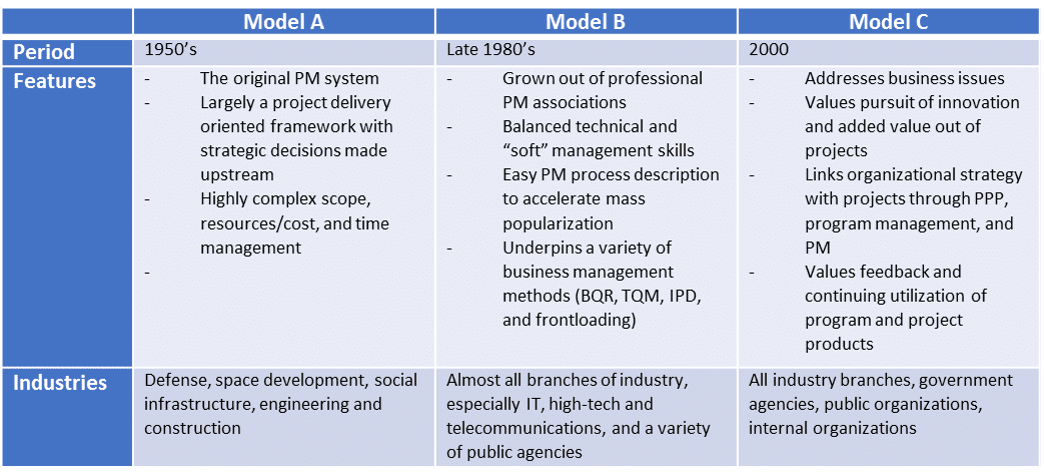

As a Project Manager, which is better:
- A project that runs on time, on budget, and meets its scope objectives, or
- A project that runs late, is over budget, but overachieves on cost savings that have a ‘change for life’ impact? Put another way, is it ever acceptable to sacrifice the original scope and schedule objectives to greater long-term value?
From a business perspective, the answer is straightforward. Projects are financial investments. In most cases, the expectation of larger revenue stream is worth short-term sacrifices in cost and schedule performance. But when this question was posted on a popular LinkedIn forum in 2014, it sparked enormous controversy within the PM community.
Over 400 people responded to the post. Only 25% responded in a strategy-minded manner, suggesting that—assuming positive future cash flow could be confirmed—it was better to realize a larger future benefits stream, even if short-term cost and schedule objectives were compromised. What explains this strategic short-sightedness?
 Project management, when it formally emerged in the 1950s, was almost exclusively a technical, execution-oriented discipline. Utilized primarily by the aerospace and defense industries, the classical project management model (coined “Model A” by Dr. Hiroshi Tanaka) focused on applying planning and management techniques to infrastructure and security projects. Many of the technical principles of our discipline (critical path method, PERT, configuration management, etc.) were codified during this time period.
Project management, when it formally emerged in the 1950s, was almost exclusively a technical, execution-oriented discipline. Utilized primarily by the aerospace and defense industries, the classical project management model (coined “Model A” by Dr. Hiroshi Tanaka) focused on applying planning and management techniques to infrastructure and security projects. Many of the technical principles of our discipline (critical path method, PERT, configuration management, etc.) were codified during this time period.
In the late 1980s, a new model emerged (“Model B”—still in widely in use today) which attempted to merge the technical aspects of project management with “soft” PM processes such as scope, risk, communications, and human resources. Despite its broader focus, this model is still based on the premise that strategic business management and project management are distinct disciplines. In this model, project management is chiefly concerned with efficient delivery, while executive management is concerned with strategy.
The prevalence of Model A and Model B organizations explains the vast number of project managers who prize “on scope, on time, on budget” above all other concerns. These models reward project managers almost exclusively on these criteria. But while a clear line of demarcation between executive and project management is efficient, it is rarely effective. When project managers are not empowered to engage in strategic discussions, the risk of “winning the battle but losing the war” is many times greater—with potentially devastating consequences.
Fortunately, a new model is emerging. “Model C” project management—clearly reflected in the new PMI® Talent Triangle—is chiefly concerned with the pursuit of project value. It prizes and rewards innovation and clear alignment of projects to organizational strategy. As such, it is the model best-equipped to solve complex problems, achieve clear business results, and delight customers. Model C project management represents a departure from the discipline’s traditional execution-orientation, requiring that project managers engage directly with strategy from concept to completion.

The emergence of Model C project management is disruptive, challenging our fundamental assumptions about a project manager’s role and value. Model C projects require a fundamentally different set of skills from those needed in execution-oriented models—chiefly: innovation, adaptability and a willingness to challenge “sacred cows.” In fact, it would not be an exaggeration to say that the project managers of tomorrow will not be project managers at all. They will be project leaders. What sets a Project Leader apart?
Model A, B, and C, adapted from The Changing Landscape of Project Management, p. 12-14, by Hiroshi Tanaka, 2011, International Project Management Association
Outcomes Focused vs. Deliverables Focused
A project leader appropriately balances tactical and strategic considerations, walking the line between “analysis paralysis” (inability to drive a project forward) and “tunnel vision” (inability to see the big picture.) While project managers are principally concerned with the project deliverable—specifications, requirements, and baselines—a project leader is also concerned with the outcome. A project leader may, for example, recommend that the deployment of a software package be delayed in order to accommodate a stakeholder request for additional training—especially if it can be shown that the additional training will lead to higher user adoption rates.
Adds Value vs. Counts Value
A project leader is also concerned with adding value, rather than merely counting it. “Counting value” is the act of reporting on activities that have already occurred, or managing work that has already been assigned to others (“micromanaging.”) A project leader is more concerned with adding value by generating forecasts, removing obstacles, ensuring alignment, championing the team, and managing complex project interfaces.
Focuses on Effectiveness vs. Focuses on Efficiency
A project leader leverages the Triple Constraint but is not limited by it. Tactical measures of efficiency—resources, dollars, and time—are always considered in light of strategic measures of effectiveness—customer satisfaction, lifecycle costs, end-user adoption rates, regulatory concerns, etc. When tactical and strategic considerations are brought into balance, a project leader’s concerns become holistic rather than myopic. “Will the team be ready to go live in 2014?” becomes “Is the business ready for us to go live in 2014?” “Will we come in under budget?” becomes “Is this project still worth what we thought it would be worth?” “Does this project meet the requirements?” is paired with this addition: “Will this deliverable help us solve the problem/achieve a result?” After all, a boat can be built to specifications but fail to float. Read the full white paper>>
For more guidance and tips on project management check out our project management Insights and Tools.
insights categories
get newsletter updates
Executive coaching & development

Sara Gallagher
Sara Gallagher is the President of The Persimmon Group, responsible for strategy and operations across all practice areas. As a practicing consultant and global speaker for The Persimmon Group since 2012, Sara has helped organizations across many industries to thoughtfully select, plan, and execute high-stakes projects and business transformations. Her approach to solving business problems is interdisciplinary, focused on “leading with both sides of the brain” on the premise that even very technical efforts require innovation, strategic thinking, and emotional intelligence to execute effectively.
Sign Up For Our Newsletter
Practical strategies to help you thrive in Leadership, Project Management, and more.





